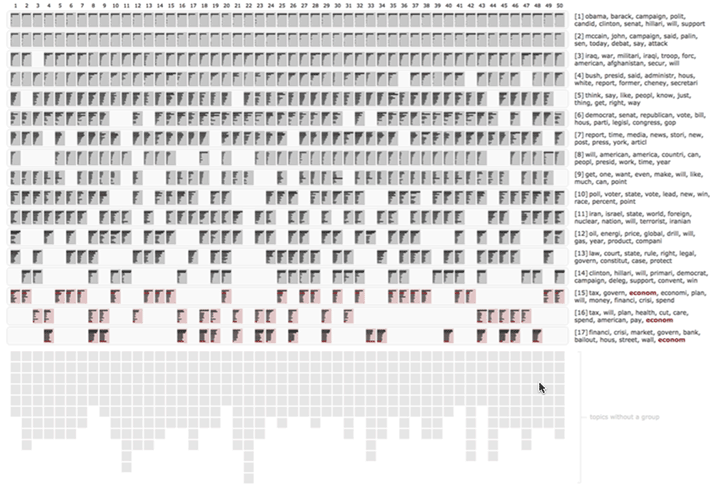NAACL-HLT, 2015

Topics uncovered from 13,250 political blogs (Eisenstein and Xing, 2010) by 50 structural topic models (Roberts et al., 2013). Latent topics are represented as rectangles; bar charts within the rectangles represent top terms in a topic. Topics belonging to the same model are arranged in a column; topics assigned to the same group are arranged in a row. When topics in a model fail to align with topics in other models, empty cells appear in its column. Similarly, when topics in a group are not consistently uncovered by all models, empty cells appear in its row. Top terms belonging to each topical group are shown on the right; they represent the most frequent words over all topics in the group, by summing their probability distributions.
Abstract
Content analysis, a widely-applied social science research method, is increasingly being supplemented by topic modeling. However, while the discourse on content analysis centers heavily on reproducibility, computer scientists often focus more on scalability and less on coding reliability, leading to growing skepticism on the usefulness of topic models for automated content analysis. In response, we introduce TopicCheck, an interactive tool for assessing topic model stability. Our contributions are threefold. First, from established guidelines on reproducible content analysis, we distill a set of design requirements on how to computationally assess the stability of an automated coding process. Second, we devise an interactive alignment algorithm for matching latent topics from multiple models, and enable sensitivity evaluation across a large number of models. Finally, we demonstrate that our tool enables social scientists to gain novel insights into three active research questions.




